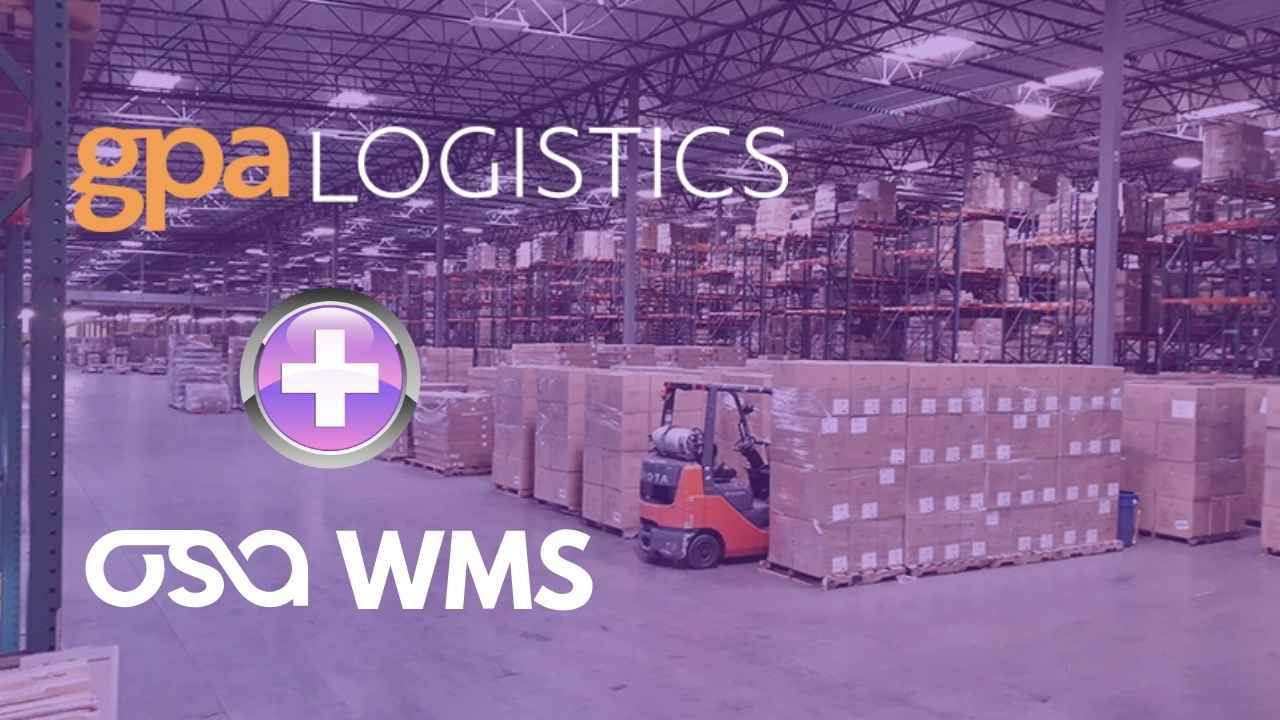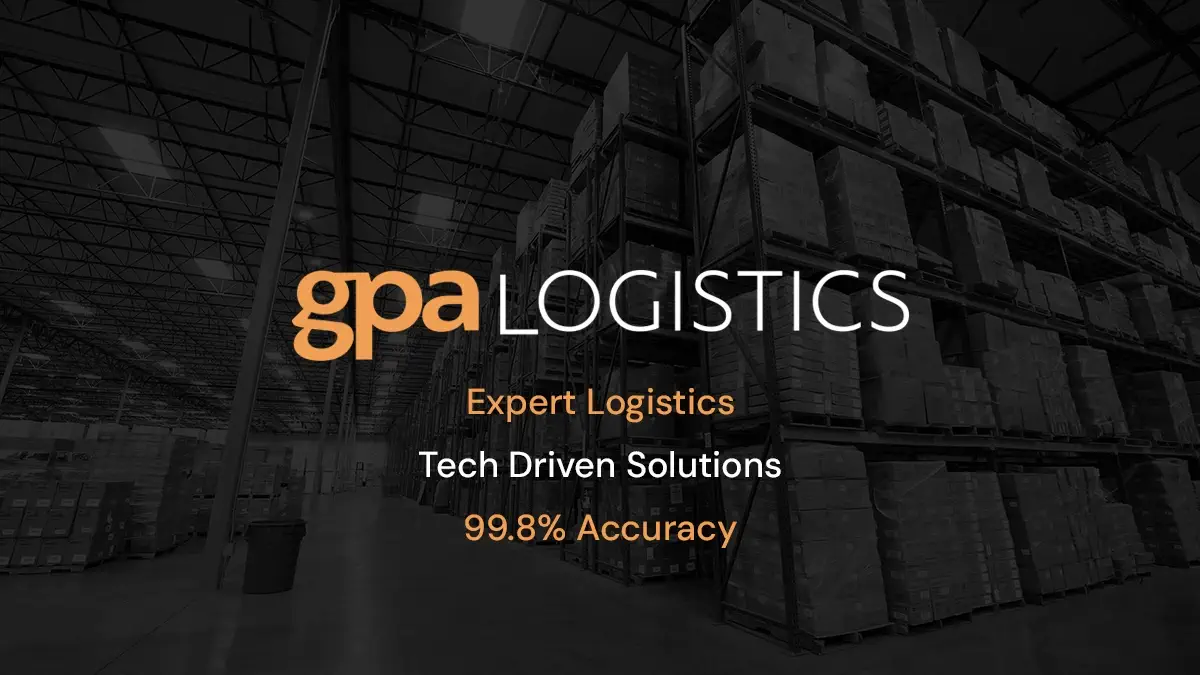
Navigating the complexities of consumer goods logistics can be challenging for small businesses. Discover how GPA Logistics Group and Osa Commerce created strategies to streamline operations, reduce costs, and enhance customer satisfaction.
Elevating Apparel & Accessories Logistics
GPA Logistics Group was recently recognized by North America Outlook for its strategic focus on innovation, particularly in the fast-paced world of consumer goods logistics.
By putting supply chain technology at the center of its operations, GPA continues to scale with cutting-edge systems. enhance inventory accuracy and real-time tracking to enable reliable, high-volume fulfillment capabilities across its warehouse network.
Using the Osa Warehouse Management System (WMS), GPA is experiencing measurable improvements in operational performance.
Understanding the Basics: What is Consumer Goods Logistics?
Consumer goods logistics is the end-to-end process of managing the flow of goods from manufacturers to consumers. It includes everything from storage, inventory management, and warehousing to transportation and distribution of products.
For logistics providers like GPA Logistics Group and those serving fast-moving inventory, getting everything streamlined and accurate isn’t just important—it’s essential. Timely delivery, accurate inventory, and flexible fulfillment options are the key to a satisfied customer and a successful sale.
With the rise of omnichannel retail and evolving consumer expectations, the logistics behind everyday goods—clothing, electronics, personal care items—have become more complex. That’s why modern 3PLs are turning to advanced technology platforms like Osa Commerce’s Collaborative Visibility Platform to unify these moving parts and deliver speed, accuracy, and insight at scale.
Scalable, Omnichannel Warehouse Management
Omnichannel retail and evolving consumer expectations have made the logistics behind everyday goods—such as clothing, electronics, and personal care items—more complex.
Osa’s WMS allows GPA to manage picking, packing, receiving, and value‑added services via AI‑driven workflows, increasing throughput while reducing errors. Customizable across apparel and accessory SKUs, it supports configurable units of measure, wave management, and seamless robotics integration where needed.
Navigating the Speed of Omnichannel Order Fulfillment: A Guide for 3PLs
Navigating the speed of omnichannel order fulfillment is crucial for 3PLs and retailers. Learn how to leverage technology to enhance operations and speed.
Read more
The Importance of Technology for Small Businesses
Efficient logistics are vital for small businesses looking to thrive in a competitive marketplace. According to Bill Drummer, CEO of GPA Logistics, technology is the backbone.
.png?width=500&height=500&name=Bill%20Drummer%20(1).png)
Investing In Technology
“The key is to invest in the right technology, as there are so many options available.
Not all of them deliver a return on investment (ROI), and many of them will be eclipsed by newer and better technology before you can implement or finish paying for them.
Bill Drummer, CEO, GPA Logistics Group
Proper logistics management with the right technology can lead to reduced operational costs, improved customer satisfaction, and increased profitability. By optimizing logistics, small businesses can ensure that their products are delivered quickly and accurately, which is essential for building a loyal customer base.
Moreover, efficient logistics can help small businesses scale their operations. As the business grows, having a comprehensive and collaborative logistics system in place allows for the smooth handling of increased order volumes without compromising on service quality. This scalability is key to sustaining long-term growth and success.
Key Strategies to Optimize Your Logistics Operations
Smart investments in cloud-based, API-rich systems like Osa’s help companies stay ahead of shifting retail and fulfillment demands—particularly in sectors where speed, visibility, and flexibility are non-negotiable. Future-proofing operations and solidifying your business as a trusted 3PL for consumer brands nationwide requires:
- Unified visibility
- Automated workflows
- AI forecasting
- Seamless integrations across sales channels
Game-Changing Optimizations
Streamline Inventory Management
Implementing an effective inventory management system can help track stock levels, reduce excess inventory, and prevent stockouts. This ensures that the right products are available when needed.
Enhance Warehouse Efficiency
Organize your warehouse layout to minimize the time and effort required to pick, pack, and ship products. Consider using technology like barcode scanners and automated sorting systems to speed up the process.
Optimize Transportation
Choose reliable carriers and optimize routes to reduce shipping times and costs. Consider partnering with third-party logistics providers (3PLs) to leverage their expertise and resources.
Improve Order Fulfillment
Ensure that orders are processed quickly and accurately. Use technology to automate order processing and track shipments in real-time to provide customers with timely updates.
Leveraging Technology to Enhance Logistics Efficiency
Technology plays a crucial role in modern logistics, enabling businesses to streamline operations and improve efficiency. For small businesses, investing in the right technology can provide a competitive edge. For instance, implementing a Warehouse Management System (WMS) can automate many aspects of warehousing, from inventory tracking to order fulfillment.
End-to-end supply chain visibility requires solutions that can integrate seamlessly with other software. The Osa WMS helps third-party logistics (3PLs) connect multiple sources. This allows businesses to monitor inventory levels, track shipments in real-time, manage returns, and make data-driven decisions to optimize logistics operations. By leveraging such advanced technologies, small businesses can achieve greater accuracy, speed, and reliability in their logistics processes.
“The key differentiator is providing customers with complete operational transparency. In today’s environment, visibility is a fundamental requirement,” Drummer emphasizes.
Measuring Success: KPIs and Metrics in Consumer Goods Logistics
To ensure that logistics operations are running smoothly and efficiently, it's important to track key performance indicators (KPIs) and metrics. Some essential KPIs for consumer goods logistics include:
Order Accuracy Rate
Measures the percentage of orders that are fulfilled correctly without errors. A high order accuracy rate is indicative of efficient logistics operations.
On-Time Delivery Rate
Tracks the percentage of orders delivered on or before the promised delivery date. This metric is crucial for customer satisfaction.
Inventory Turnover Ratio
Indicates how often inventory is sold and replaced over a period. A higher turnover ratio suggests effective inventory management.
Warehouse Productivity
Measures the efficiency of warehouse operations, including the speed and accuracy of picking, packing, and shipping processes.
By regularly monitoring these KPIs, small businesses can identify areas for improvement and make informed decisions to enhance their logistics performance.
Translating Technology into Success
GPA’s strategy is built around three core priorities:
- Delivering on service level agreements (SLAs) with precision
- Safeguarding and empowering its workforce
- Positioning itself as the go-to 3PL for companies ready to outsource their private warehouse operations to an expert partner
That expertise now extends even further through the integration of robotics and AI, enabling smarter pick paths, optimized slotting, and faster, more accurate order fulfillment. These advancements reflect GPA’s commitment to proactive customer support, operational resilience, and the ability to navigate complex logistical challenges with the help of modern technology and a highly skilled team.
To learn more about GPA Logistics Group, please visit their website https://www.gpalogisticsgroup.com/.





